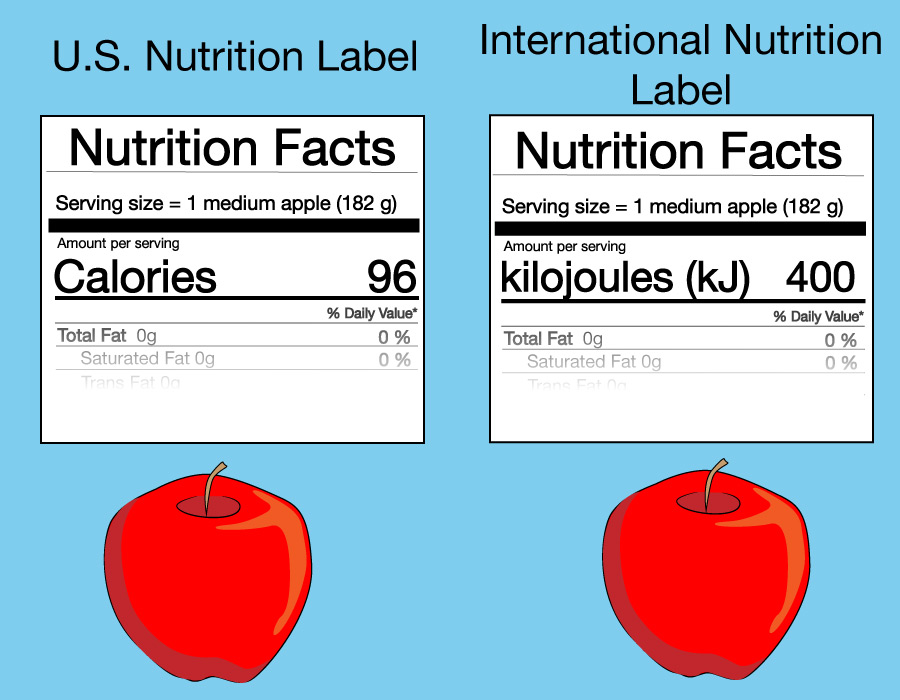What are calories (or kilojoules) in food?
As we’ve discussed, food contains chemical potential energy that can be used by our bodies after we eat it. Like any form of energy, we can measure this energy content of food in joules. However, for historical reasons, foods are rarely labeled in this way. Instead:
- If you live in the United States, nutrition labels generally show the energy content of food in units called “calories.” One food calorie is the same as 4,184 joules.
- In the rest of the world, nutrition labels generally show the energy content in “kJ,” which is short for kilojoules (kJ), or thousands of joules.
The figure below shows typical nutrition labels for an apple as you’d see them in the United States and elsewhere. Note that both labels represent essentially the same amount of energy:
- The U.S. label says 96 calories. Because 1 calorie = 4,184 joules, 96 calories is equivalent to 96 4,184 ≈ 402,000 joules.
- The international label shows 400 kJ, which is 400,000 joules. (The slight difference from the 402,000 above is because food labels always show approximations.)

The average teenager needs about 10 million joules of energy from food each day, which is equivalent to 10,000 kilojoules or about 2,400 calories. Of course, that is only an average, and the amount of energy that you need from food each day depends on your size, age, how much you exercise, and other factors.